What Are Birds Feet Called? Are There Different Types?
Last Updated on
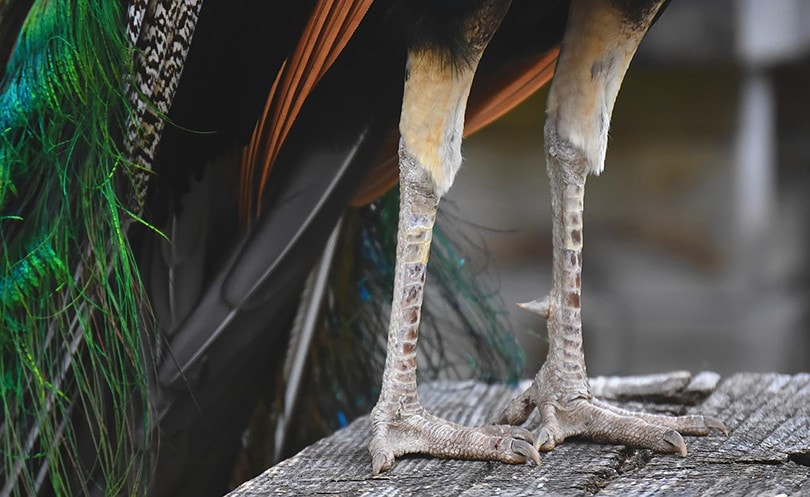
Do you know what most people think to be the bird’s knee is the ankle, which means that birds walk on their toes? Yes, the knee will mostly be tucked under the feathers, meaning birds walk on their toes.
Bird’s toes or feet are named depending on the number and arrangement of toes. A bird’s toe is also referred to as a digit, which in comparison to a human being’s foot, the first digit is like our big toe, while the second digit is like our second toe and so forth. There are certain birds with four toes, others with two and others with one.
Let’s take a look at some of the different bird feet and the influences behind them, to better appreciate a bird whenever you see one.
Types of Bird Feet
There are different kinds of birds with different feet. All this is designed to help them adapt to their ecology and thrive. Almost all kinds of bird feet are defined by a dinosaur-like name such as zygodactyls.
But don’t worry, with a bit of explanation you will soon be accustomed to words that seem to come straight out of Jurassic park!
Anisodactyl

This can be categorized as the most common type of birdsfoot all over the world, with a huge number of perching bird species falling under this category.
the first digit or what would be the big toe on a human’s foot faces backwards. The rest of the digits face forward. a great example is the chicken.
Apart from the chicken, the Anisodactyl family will include:
- Crows
- Finches
- Flycatcher
- Nightingales
- Swallows
- Tanagers
- Shrikes
- Vireos
- Wrens
- Warblers
These families of birds are some of the most mysterious colorful and diverse birds in the world, such as the cock-of-the-rock birds from South America, and the birds of paradise in New Guinea.
Birds with Anisodactyl feet will be found in most tropical areas of the world with favourite habitats including woodlands, forests, scrublands, deserts, urban and mountain environments. They will mostly go for wet to mild temperate areas, especially where most trees are found.
Zygodactyls

This is the second most common type of bird feet in the world, accommodating a wide variety of birds that have evolved them to ensure they achieve maximum survival in the wild. The first digit, also called the Halifax, and the fourth digit face backwards while the other two face forward.
Some of the birds in this family include:
- Woodpeckers
- Ospreys
- Owls
- Cuckoos
- Parrots
- Mousebirds
- Swifts
- Cuckoo rollers
For such birds as woodpeckers, the zygodactyls feet come in handy while they look for food. They can use them to cling on tree trunks, as the feet arrangement provides more support.
For such birds as parrots, the zygodactyl’s feet come in handy in holding food because they use their feet to grab the food as they eat.
On the other hand, a bird- such as the owl with the same type of feet has the capability of rotating the fourth digit to the front. However, while in the zygodactyls position, the feet will help the owl to grab food and at the same time get a more secure footing on the tree.
Heterodactyl
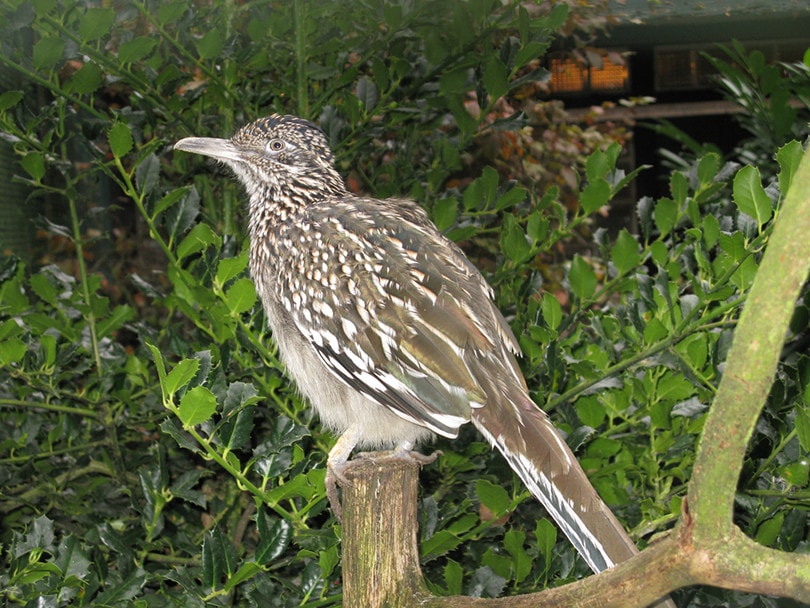
This is a type of foot similar to the Zygodactyls in terms of appearance but only differs in the arrangement. For the Heterodactyl bird, the feet are arranged in such a way that the first and second digits face backwards and the third and fourth digits face forwards.
There are not so many birds with this kind of arrangement except for the Trogons.
Trogons are common in tropical forests mostly in the north of Mexico, Huachuca Mountains, Santa Rita Mountains etc. The birds are identifiable by their rose-red colors or metallic green, stout-bodied and square tailed bodies. They are a favourite among bird watchers and can be traced with their repetitive calls in most Sycamore and oak forests near canyon streams.
Trogons will put their nests on trees, however since they cannot dig their nest holes they rely on woodpeckers to do the work for them and after they are done with the nest, the trogon moves in.
They are also human friendly and will not mind living near human areas, especially near campgrounds and on trails.
Syndactyl
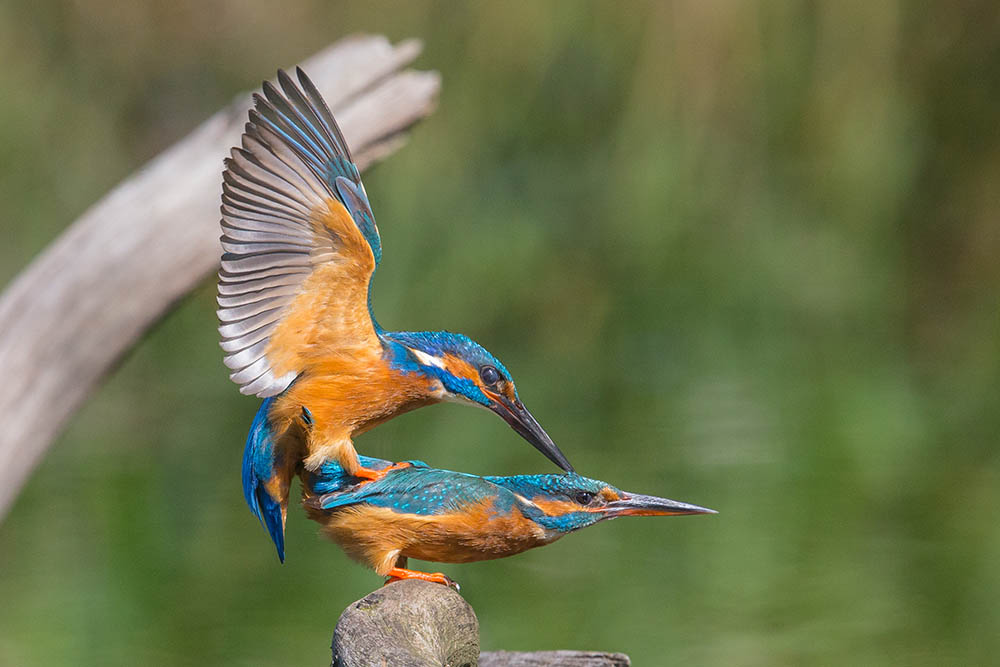
These are the type of birds where two of their front digits are partially woven together or webbed for the larger part of their length while the rest appear non-webbed. Mostly the two toes woven together will be the second and the third. The fourth digit will be on the front and the first digit at the back.
Most of the birds belonging to these families include:
- Kingfishers
- Hornbill
- Rollers
- Bee-eaters
- Northern caracara
Certain birds with three fused fingers in front from the second to the fourth such as the giant kingfisher will also fall under this category.
Most of the birds under this category have small to medium size bodies, huge heads and small feet. They mostly nest in tree cavities, burrow in the ground and mostly feed on vegetables, fruits, insects, vertebrates and invertebrates.
Most of the species originate from Africa, Asia, Australia, Europe, North and South America.
Pamprodactyl
https://www.instagram.com/p/CR1fnR8lAPE/
This kind of feet have all the digits facing forward, but they can also rotate the two outer digits backwards. These feet are found in such birds as swifts. They come in handy for the bird in case it tries to attach itself to a vertical surface such as a wall or a chimney.
Some mousebirds also fall under the same category.
Tridactyl

This is a bird with three digits on the feet with the first digit missing.
There are a couple of birds that belong to this club including:
- Emus
- Bustards
- Northern three-toed woodpecker
- Quails
Didactyl
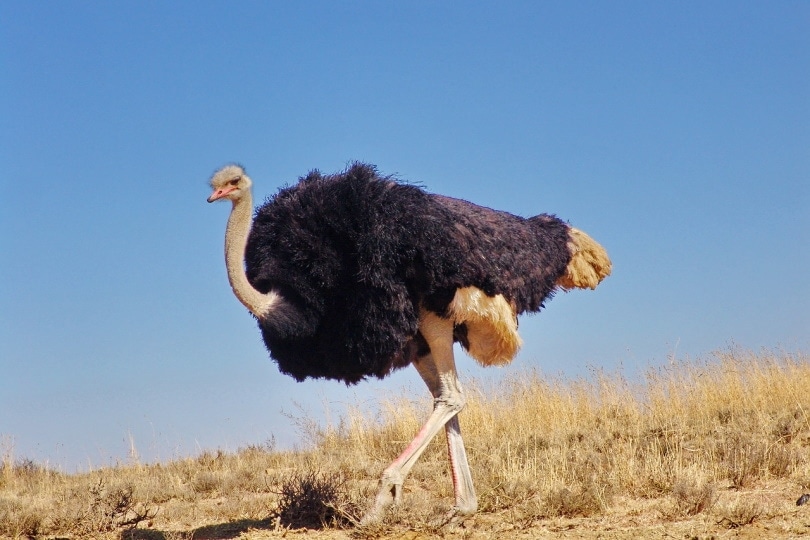
This is mainly found in ostriches or any kind of bird with two-toed feet. The foot closely resembles a horse’s foot, and it is useful for running.
Talons
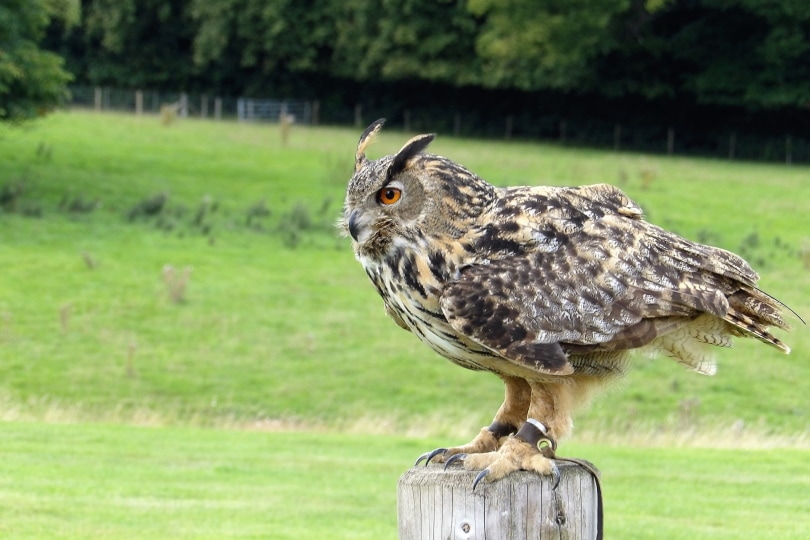
Talons are large and strong especially in birds of prey as they help them catch and tear through flesh. Most birds of prey have proportionally huge talons. However, it is worth noting that most birds will have sharp claws used for different reasons including burrowing or perching.
Great examples of a bird with talons are eagles; they are known to have strong enough talons to carry a goat away. Other examples of birds of prey include:
- Hawks
- Vultures
- Buzzards
- Harriers
- Kites
- Falcons
Webbed Feet

You most likely have seen a bird with webbed feet. These birds can all be classified under four different kinds as seen below:
Palmate Feet
Here, the first digit faces backwards while the other three digits are all webbed. Some of these birds include ducks, geese, gulls, terns, and loons.
Semi Palmate
These types of birds can be confused for palmates as their feet appear the same, but smaller. It will take a keen eye to notice the difference. Some of the best examples of semi palmate include herons, grouse, sandpipers and avocets
Totipalmate
These feet are all webbed from the first to the last digit. The most common examples include cormorants, anhingas, boobies, gannets, frigate birds.
Lobate
The feet in this category have the first digit facing backwards with the rest of the digits with lobes of skin around them. Some of these examples include grebes, coots and phalaropes.
The Evolution of Bird’s Feet
Whereas most mammals use four legs, birds use two, meaning their legs have to be adapted to standing. Birds have heavier leg bones than most similar-sized mammals to aid with their weight and hunting.
Different birds have evolved their feet to aid them to survive in different ways, let’s take a look at some of this.
- Birds without legs: Birds such as Swifts do not have legs, just toes which they use to cling on buildings and cliffs while nesting.
- Ground legs: Birds such as ostriches have bigger and heavier legs than humans. Since they are flightless birds, they depend on their legs to run. It can run up to 70 kilometers per hour, with strides of over four meters. This means their legs are adapted for ground activities with increased strength and heavier bones.
- Wading: Certain birds can keep their bodies above water and let their feet sink to the deep. This helps them find food on the water floor surface. This comes in handy for birds like stilts, which can even perch on one leg while standing.
- Killing and carrying: This will mainly involve hunting birds that have evolved their feet to include strongly curved talons and strong legs that help them grab and carry away their prey.
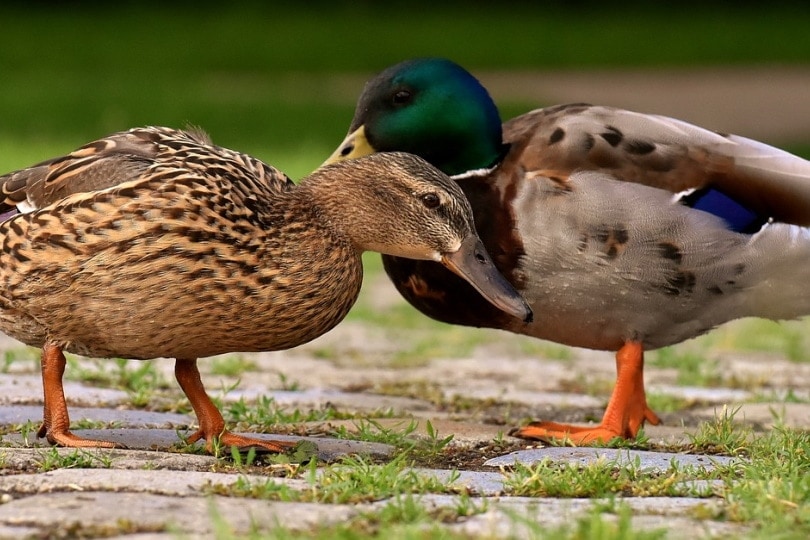
How Do Birds Use Their Feet?
The birds use their feet for various things such as hunting, perching, scratching and even carrying away their prey. Below are more elaborate uses of the feet.
- Most birds have four toes each arranged to help the bird adapt to its environment. Some birds have three toes facing front with the fourth at the back while others have two facing front and two facing back. This arrangement will help the bird in such things as perching and grabbing.
- Some birds such as herons have evolved long toes which spread the bird’s weight, which helps them not sink in the mud in their marshland ecology.
- Birds are quite stable while perching as their feet are evolved to help with it. This is due to the toe arrangement and the fact that they also have strong tendons, which run along the outside of the ankle and knee.
- Certain birds have evolved their feet to acquire a web-like extension that connects their toes creating a way for them to puddle while on the water.
- Feet of such birds as owls and eagles have evolved to hunt, pierce and tear flesh. Their feet are strong with tough talons that help them grab and fly away with prey.

Frequently Asked Questions
Are birds related to dinosaurs? Why do they come with feet names that sound like dinosaurs?
It may seem odd that birds have feet names that sound like dinosaurs. It’s true; currently, research has confirmed that birds are descendants of dinosaurs due to several similarities. Rare fossils have also shown similar features including feathers.
Do birds have foot problems?
Birds are prone to problems with their feet which can be brought about by several issues. Certain feet diseases including lameness and bumblefoot are dangerous while others are mild.
Some of the symptoms of a bird with a sick fee include:
- Curling toes
- Paralysis
- Gout
- Chewing and stomping
- Swollen feet
- Splayed legs

In Conclusion
If you are interested in bird watching, there is a lot more you can find out just from observation. With a bit of research, you will get into a whole new world, where you will discover just how majestic, unique and impressive birds are.
With a variety of species available, their adaptations to different environments, physical features such as feet as discussed in this article, you will surely have something to marvel at.
Image Credit: Alexas_Fotos, Pixabay
About the Author Robert Sparks
Robert’s obsession with all things optical started early in life, when his optician father would bring home prototypes for Robert to play with. Nowadays, Robert is dedicated to helping others find the right optics for their needs. His hobbies include astronomy, astrophysics, and model building. Originally from Newark, NJ, he resides in Santa Fe, New Mexico, where the nighttime skies are filled with glittering stars.
Related Articles:
Binocular Magnification Chart: Numbers & Distances Compared
10 Types of Hummingbirds in Arkansas (With Pictures)
8 Types of Hummingbirds in Nebraska (With Pictures)
5 Types of Hummingbirds in Idaho (With Pictures)
3 Types of Hummingbirds in Mississippi (With Pictures)
8 Types of Hummingbirds in Kansas (With Pictures)
5 Types of Hummingbirds in West Virginia (With Pictures)
5 Types of Hummingbirds in Ohio (With Pictures)
